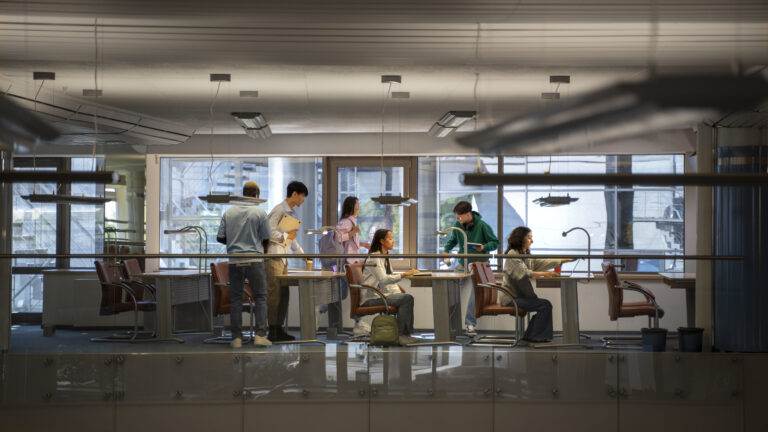Introduction
Definition of Facility Management
Facility management can be defined as a multidisciplinary field that focuses on the efficient and effective management of physical resources and services within built environments. This encompasses a wide array of operational activities, including:
- Maintenance of buildings and equipment
- Space Planning to optimize utility
- Health and Safety Compliance to protect occupants
- Sustainability Initiatives to reduce environmental impact
By harmonizing these elements, facility management ensures that organizational infrastructure supports core business objectives.
Significance of Facility Management Trends
Staying abreast of facility management trends is vital for any organization aiming to thrive in a competitive landscape. Current trends drive innovations that enhance operational efficiency and improve employee satisfaction. Consider the following insights:
- Technological Advancements: Integration of IoT and automation boosts productivity.
- Sustainability: Focus on green practices resonates with both consumers and employees.
- Data Utilization: Leveraging analytics informs strategic decision-making.
These trends not only optimize operational costs but also foster a work environment that is adaptive, resilient, and forward-thinking, crucial for meeting the evolving demands of the modern workplace.
Technology Integration

IoT Implementation in Facility Management
The Internet of Things (IoT) is revolutionizing facility management by facilitating smarter, data-driven operations. By integrating IoT sensors and devices, organizations can gain real-time insights into their environments. For instance, temperature and humidity sensors can optimize energy usage, leading to significant cost savings. Some key benefits include:
- Enhanced Monitoring: Track equipment status and optimize maintenance schedules.
- Data-Driven Decisions: Utilize real-time data for quicker responses to issues.
- Predictive Maintenance: Identify potential failures before they escalate, minimizing downtime.
Automation and Robotics in Facilities
Automation and robotics are transforming the way facilities operate. These technologies streamline processes that were once labor-intensive, thus allowing facility managers to focus on higher-level tasks. For example:
- Cleaning Robots: Automated floor cleaners can maintain hygiene without human intervention.
- Smart HVAC Systems: These systems adjust temperatures based on occupancy patterns, ensuring comfort and efficiency.
Incorporating automation not only enhances operational efficiency but also improves the overall experience for employees and visitors, creating a workplace that is both productive and pleasant.
Sustainability Initiatives

Green Building Practices
As organizations increasingly commit to sustainability, green building practices have emerged as intricate yet impactful solutions. By prioritizing eco-friendly materials and designs, facility managers can significantly reduce their carbon footprint. This includes:
- Sustainable Materials: Utilizing recycled or locally sourced materials during construction or renovation.
- Natural Lighting: Designing spaces that maximize daylight can reduce reliance on artificial lighting, promoting both energy savings and employee well-being.
- Eco-friendly Landscaping: Implementing drought-resistant plants can reduce water consumption and enhance biodiversity around the facility.
Energy Efficiency Solutions
Energy efficiency solutions play a critical role in maintaining operational costs while promoting environmental responsibility. Simple upgrades can yield remarkable results. For instance:
- LED Lighting: Transitioning to LED bulbs significantly cuts down on energy consumption while delivering the same lighting quality.
- Smart Thermostats: These devices adjust heating and cooling based on occupancy patterns, further optimizing energy usage.
By embracing these sustainability initiatives, facility managers not only meet regulatory requirements but also foster a culture of responsibility and informed stewardship within their organizations, ultimately contributing to a healthier planet.
Remote Work Adaptation
Virtual Management Tools
As remote work becomes a staple in many organizations, the importance of virtual management tools cannot be overstated. These tools facilitate seamless communication and collaboration among teams, regardless of their location. For example:
- Project Management Software: Tools like Trello and Asana help teams stay organized and track progress in real-time.
- Video Conferencing Platforms: Applications like Zoom or Microsoft Teams enable face-to-face interactions, which foster connection and engagement.
Using these technologies, facility managers can efficiently coordinate tasks and maintain productivity, ensuring that operations run smoothly without being confined to a physical location.
Flexibility in Facility Operations
Flexibility is key in adapting to the dynamics of remote work. Facilities can now be reimagined to support hybrid work models, tailoring spaces for optimal usage. Consider these strategies:
- Multi-Use Spaces: Design areas that can be easily reconfigured for meetings, collaborations, or quiet work when needed.
- Hot Desking: Offering desks that employees can reserve on an as-needed basis encourages efficient use of space and reduces costs.
By integrating these flexible operations, facility managers not only accommodate remote work trends but also foster an environment that supports employee needs, ultimately enhancing satisfaction and productivity.
Data-Driven Decision Making
Predictive Analytics in Facility Management
In today’s data-centric world, predictive analytics has become a game changer in facility management. By analyzing historical data and trends, organizations can anticipate issues before they arise. For example:
- Maintenance Scheduling: Utilizing predictive analytics allows managers to schedule maintenance proactively, thereby mitigating costly repairs and extending the lifespan of equipment.
- Occupancy Monitoring: Analyzing usage patterns can help determine optimal space allocation, ensuring facilities are used efficiently.
This data-driven approach empowers facility managers to make informed decisions that enhance operational effectiveness and reduce costs.
Performance Tracking and Reporting
Performance tracking and reporting further bolster data-driven decision-making. By regularly assessing key performance indicators (KPIs), facility managers can measure success and identify areas for improvement. Consider implementing:
- Dashboards: Visual metrics that provide real-time insights into building performance—such as energy consumption and maintenance status.
- Regular Reports: Monthly or quarterly reviews of operational effectiveness help in setting future goals and benchmarks.
These tools not only provide clarity but also foster accountability, ensuring that every decision supports organizational objectives and enhances overall performance.
Employee Well-being Focus

Health and Wellness Programs
Fostering a culture that prioritizes employee well-being is paramount for any thriving organization. Health and wellness programs have emerged as essential components in promoting a healthy workplace environment. These programs can include:
- Fitness Initiatives: Offering subsidized gym memberships or organizing group fitness classes encourages physical activity and overall well-being.
- Mental Health Resources: Providing access to counseling services or stress management workshops can significantly improve employees’ mental health.
- Healthy Eating: Organizing nutrition workshops or providing healthy snacks in the workplace fosters better eating habits.
Such initiatives not only enhance employee well-being but also boost morale and productivity.
Workplace Safety Enhancements
In tandem with health initiatives, workplace safety enhancements play a crucial role in ensuring employees feel secure in their environments. Effective safety measures may encompass:
- Regular Safety Training: Ongoing education helps employees understand best practices, reducing accidents and injuries.
- Ergonomics Assessments: Tailoring workspace setups to individual needs can prevent musculoskeletal issues and improve comfort.
By addressing both health and safety, organizations demonstrate their commitment to the well-being of their employees, fostering a supportive atmosphere that drives engagement and retention.
Outsourcing and Partnerships

Collaborative Vendor Relationships
In the pursuit of efficient facility management, building collaborative vendor relationships is paramount. Engaging closely with vendors fosters a partnership that goes beyond transactional interactions. This can lead to:
- Customized Solutions: Vendors who understand the unique needs of an organization can tailor their services to enhance efficiency.
- Shared Knowledge: Regular communication and brainstorming can uncover innovation and best practices that benefit both parties.
- Cost Savings: Long-term partnerships often bring about negotiated discounts and improved service levels that reduce overall costs.
These symbiotic relationships create a framework for success, making it easier to navigate challenges together.
Outsourcing Non-core Functions
Outsourcing non-core functions can also streamline facility management processes. By delegating tasks that do not fall within the core competencies of the organization, managers can allocate resources more effectively. Examples include:
- Cleaning Services: Engaging a specialized cleaning company ensures high standards of hygiene without distracting from primary business activities.
- IT Support: Outsourcing IT services can provide access to expertise that is both current and extensive, enhancing technological reliability.
By leveraging outsourced services, facility managers can enhance operational efficiency and focus on strategic initiatives, driving overall organizational success.
Resilience and Risk Management
Disaster Preparedness Plans
In an unpredictable world, having comprehensive disaster preparedness plans is essential for any organization. These plans ensure that facility managers can respond swiftly to emergencies, minimizing impact and disruption. Key components include:
- Risk Assessment: Identify potential risks—such as natural disasters, fires, or cyber threats—to create realistic responses.
- Emergency Response Teams: Designate and train specific individuals who are responsible for coordinating actions during a crisis.
- Regular Drills: Conducting simulation exercises keeps everyone familiar with protocols, ensuring a prompt response when it matters most.
Such preparedness not only protects employees but also secures the organization’s assets and reputation.
Business Continuity Strategies
Alongside disaster preparedness, robust business continuity strategies are key to maintaining operations during unforeseen disruptions. Effective strategies may involve:
- Resource Allocation: Ensuring critical resources are available and accessible during emergencies.
- Cross-Training Employees: This approach allows staff to take on multiple roles, ensuring that essential functions continue even if key personnel are unavailable.
By developing resilience through these measures, organizations can safeguard themselves against potential crises, ensuring a path towards recovery and continuity, ultimately reinforcing stakeholder confidence and trust.
Cost Optimization Strategies

Budget Allocation Trends
In the dynamic environment of facility management, understanding budget allocation trends is crucial for optimizing costs. As organizations strive to do more with less, facility managers need to invest wisely. Observing key trends can aid in this endeavor:
- Prioritizing Sustainability: Allocating budgets toward green initiatives often leads to long-term savings by reducing energy and maintenance costs.
- Investing in Technology: While it may require upfront costs, technology typically enhances efficiency, providing significant returns on investment through automation and data analytics.
- Flexible Budgeting: Adapting budgets based on real-time data and changing needs helps organizations remain agile and responsive.
These trends not only maximize resources but also align spending with strategic objectives.
Resource Optimization Techniques
Alongside careful budget allocation, resource optimization techniques are essential for achieving cost efficiency. By evaluating how resources are utilized, facility managers can enhance productivity. Consider the following methods:
- Space Utilization Studies: Regularly assessing how spaces are used can reveal opportunities to consolidate or repurpose underutilized areas.
- Energy Audits: Conducting assessments to identify energy waste can lead to targeted improvements that reduce costs.
- Preventive Maintenance: Implementing a proactive maintenance schedule minimizes costly repairs and downtime.
These strategies collectively ensure that organizations maximize their resources, fostering a prudent operational approach while maintaining high service standards.
Customer Experience Enhancement

Client-Centric Service Approaches
Enhancing customer experience has become paramount in facility management, with organizations adopting client-centric service approaches. This focus ensures that the needs and expectations of clients are prioritized in every service aspect. Some effective strategies include:
- Personalized Services: Tailoring services based on individual client requirements fosters loyalty and increases satisfaction. For example, providing customized cleaning schedules that align with client operations can significantly enhance their experience.
- Proactive Communication: Regular updates on service changes or issues help build trust and transparency with clients.
- Dedicated Support Teams: Assigning specific teams to manage client relationships can ensure quick response times and tailored solutions.
These approaches create long-lasting partnerships by making clients feel valued and understood.
Feedback Utilization for Improvements
Equally important is the effective utilization of client feedback to drive continuous improvement. Gathering insights enables organizations to identify areas for enhancement. Consider these methods:
- Surveys and Questionnaires: Regularly conducting client satisfaction surveys can provide actionable insights into their experiences.
- Engaging Follow-ups: Following up with clients after services can reveal additional needs and enhance relationships.
- Feedback Integration: Creating a process to integrate client feedback into service adjustments ensures that enhancements resonate with client expectations.
By actively utilizing feedback, organizations not only enhance customer experiences but also demonstrate a commitment to ongoing improvement, ultimately fostering greater loyalty and satisfaction.





